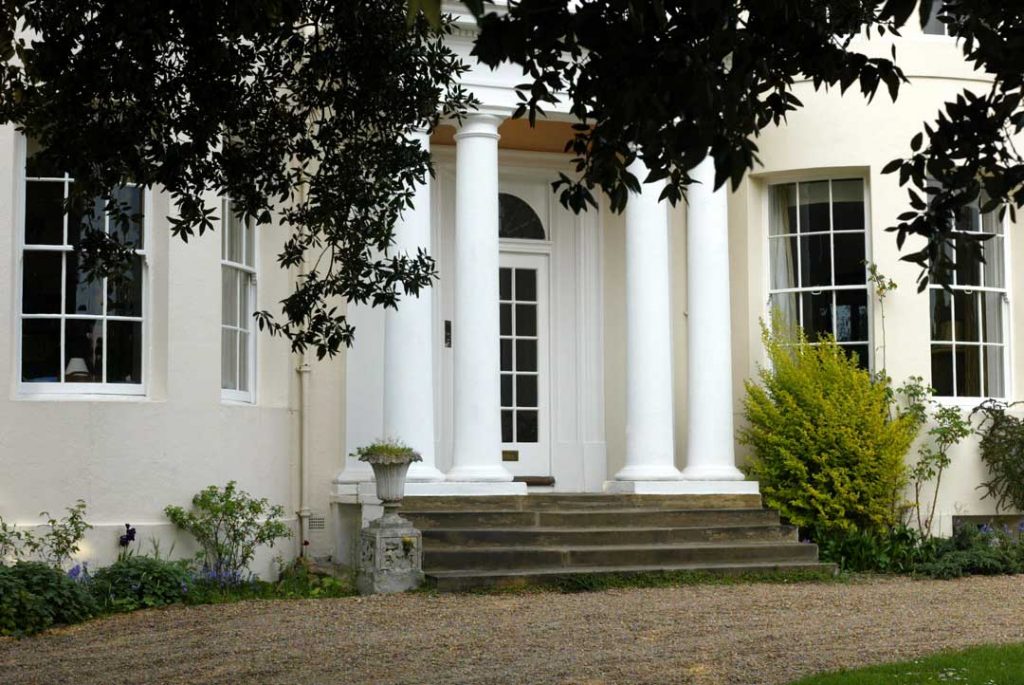Residential Soundproofing London:
Building Regulations – Part E1 (Protection against sound from other parts of the building and adjoining buildings) / Bromley, London – read more…

Client
Private residence, Bromley, London
Circumstances
The project involved a mid-twentieth century Victorian conversion, comprised of four flats. The 2nd floor flat (Flat 4) had undertaken a full refurbishment, without the consent of their co-freeholders, including relocating the kitchen (above a bedroom) and installing engineered timber floors throughout. Subsequently, the 1st floor flat (Flat 3) complained of airborne and impact noise nuisance, most notably, via the separating floor/ceiling, between the following rooms:
- Sitting Room (Flat 3) & Sitting Room (Flat 4)
- Bedroom 2 (Flat 3) & Kitchen (Flat 4)
- Bedroom 1 (Flat 3) & Bedroom 1 (Flat 4)
Project Brief
To design and install an *acoustic ceiling system, to reduce airborne and impact sound transmission between Bedroom 2 (Flat 3) and Kitchen (Flat 4), such that the minimum standards set-out in the Building Regulations – Part E would be met (in relation to dwelling-houses & flats formed by material change of use), as per Table 1a, below.
| Table 1a: | ||||||
|
||||||
| Purpose built dwelling-houses & flats | Walls | 45 | – | |||
| Floors and Stairs | 45 | 62 | ||||
| Dwelling-houses & flats formed by material change of use | Walls | 43 | – | |||
| Floors and Stairs | 43 | 64 | ||||
*To avoid disrupting the recently fitted kitchen inside Flat 4, an acoustic ceiling system was preferred to a system applied to the separating floor.
In terms of the remaining rooms, the same performance criteria applied. However, to avoid disrupting the original plaster coving and ceiling roses inside Flat 3, an acoustic flooring system was preferred to a system applied to the separating ceiling. For these works, the proprietor of Flat 4 chose, in the first instance, to pursue their own course of corrective action.
Methodology
Site Survey:
A site survey was carried out, including UKAS-accredited, impact and airborne sound insulation testing, to establish the extent of the remedial works required. Table 1, below, details the results.
Table 1:
| Test No. | Rooms | DnT,w+Ctr (dB) | L’nT,w (dB) | ||||
| Measured | Required | Pass/Fail | Measured | Required | Pass/Fail | ||
| 1 & 2 | Sitting Room (Flat 3) & Sitting Room (Flat 4) | 42 | ≥43 | FAIL | 58 | ≤64 | PASS |
| 3 & 4 | Bedroom 2 (Flat 3) & Kitchen (Flat 4) | 46 | ≥43 | PASS | 60 | ≤64 | PASS |
| 5 & 6 | Bedroom 1 (Flat 3) & Bedroom 1 (Flat 4) | 39 | ≥43 | FAIL | 57 | ≤64 | PASS |
Sitting Room (Flat 3) & Sitting Room (Flat 4) – the performance criteria for impact sound transmission was already met (surpassing the minimum standards by 6dB). However, in terms of airborne sound insulation, an additional 1dB was required.
Bedroom 2 (Flat 3) & Kitchen (Flat 4) – the performance criteria for airborne sound insulation and impact sound transmission was already met (surpassing the minimum standards by 3dB and 4dB, respectively). However, in light of the circumstances, notably, the sensitivity of having a kitchen located directly above a bedroom, it was agreed remedial works should still go-ahead.
Bedroom 1 (Flat 3) & Bedroom (Flat 4) – the performance criteria for impact sound transmission was already met (surpassing the minimum standards by 7dB). However, in terms of airborne sound insulation, an additional 4dB was required.
Design & Installation of Sound Insulating System to Party Floor & Ceiling (Phase 1):
Sitting Room (Flat 3) & Sitting Room (Flat 4) and Bedroom 1 (Flat 3) & Bedroom 1 (Flat 4) – the proprietor of Flat 4 chose to install carpet (with underlay), directly atop the engineered timber floor.
Bedroom 2 (Flat 3) & Kitchen (Flat 4) – a 6-part (175mm) independent ceiling system was specified and installed, directly beneath the existing, lath-and-plaster ceiling.
Pre-Completion Testing of Sound Insulating System to Party Floor & Ceiling (Phase 1):
On completion of works, a pre-completion impact and airborne sound insulation test was carried out, to verify compliance with the performance criteria. Crucially, any shortcomings would need to be corrected, through supplementary works. Table 2, below, details the results.
Table 2:
| Test No. | Rooms | DnT,w+Ctr (dB) | L’nT,w (dB) | ||||
| Measured | Required | Pass/Fail | Measured | Required | Pass/Fail | ||
| 1 & 2 | Sitting Room, (Flat 3) & Sitting Room (Flat 4) | 41 | ≥43 | FAIL | 31 | ≤64 | PASS |
| 3 & 4 | Bedroom 2 (Flat 3) & Kitchen (Flat 4) | 56 | ≥43 | PASS | 47 | ≤64 | PASS |
| 5 & 6 | Bedroom 1 (Flat 3) & Bedroom 1 (Flat 4) | 41 | ≥43 | FAIL | 30 | ≤64 | PASS |
Sitting Room (Flat 3) & Sitting Room (Flat 4) – a supplementary reduction in impact sound transmission of 27dB was achieved (surpassing the minimum standards by 33dB). However, in terms of airborne sound insulation, there was a subsequent decrease of 1dB, therefore, an additional 2dB was still required.
Bedroom 2 (Flat 3) & Kitchen (Flat 4) – a supplementary increase in airborne sound insulation of 10dB was achieved (surpassing the minimum standards by 13dB). In terms of impact sound transmission, there was a subsequent reduction of 13dB (surpassing the minimum standards by 17dB). Accordingly, remedial works were signed-off between these rooms.
Bedroom 1 (Flat 3) & Bedroom 1 (Flat 4) – a supplementary reduction in impact sound transmission of 27dB was achieved (surpassing the minimum standards by 34dB). However, in terms of airborne sound insulation, despite a subsequent increase of 2dB, an additional 2dB was still required.
Design & Installation of Sound Insulating System to Party Floor (Phase 2):
Sitting Room (Flat 3) & Sitting Room (Flat 4) and Bedroom 1 (Flat 3) & Bedroom 1 (Flat 4) – based on the results of pre-completion sound insulation testing, a 4-part (21mm) surface-mounted, acoustic flooring system was specified and installed, directly atop the engineered timber floor, followed by the re-installation of the carpet (with underlay).
Pre-Completion Testing of Sound Insulatiing System to Party Floor (Phase 2):
On completion of works, a further pre-completion airborne and impact sound insulation test was carried out, to verify compliance with the performance criteria. As before, any shortcomings would need to be corrected, through supplementary works. Table 3, below, details the results.
Table 3:
| Test No. | Rooms | DnT,w+Ctr (dB) | L’nT,w (dB) | ||||
| Measured | Required | Pass/Fail | Measured | Required | Pass/Fail | ||
| 1 & 2 | Sitting Room (Flat 3) & Sitting Room (Flat 4) | 45 | ≥43 | PASS | 27 | ≤64 | PASS |
| 3 & 4 | Bedroom 1 (Flat 3) & Bedroom 1 (Flat 4) | 45 | ≥43 | PASS | 26 | ≤64 | PASS |
Sitting Room (Flat 3) & Sitting Room (Flat 4) and Bedroom 1 (Flat 3) & Bedroom 1 (Flat 4) – a supplementary increase in airborne sound insulation of 4dB was achieved (surpassing the minimum standards by 2dB). In terms of impact sound transmission, there was a subsequent reduction of 4dB (surpassing the minimum standards by 37dB and 38dB, respectively). Accordingly, remedial works were signed-off between these rooms and the project was complete.

 +44 (0) 20 3858 0833
+44 (0) 20 3858 0833 email
email






















